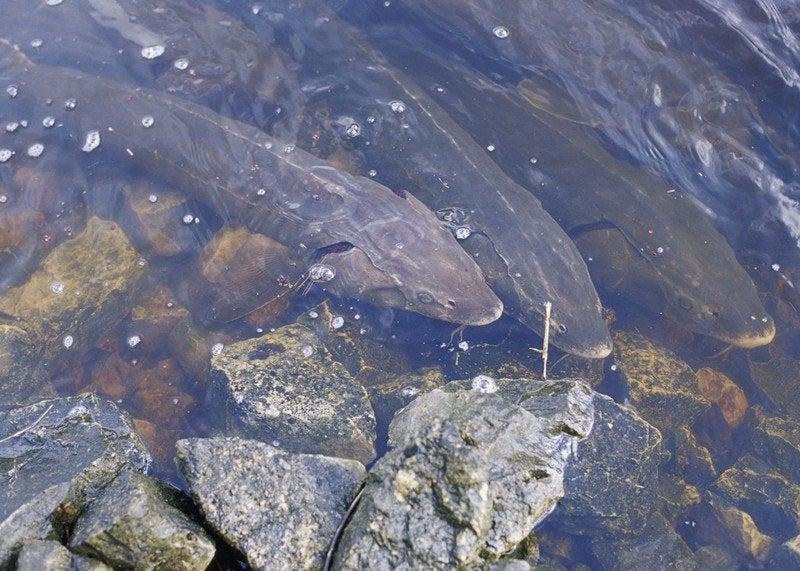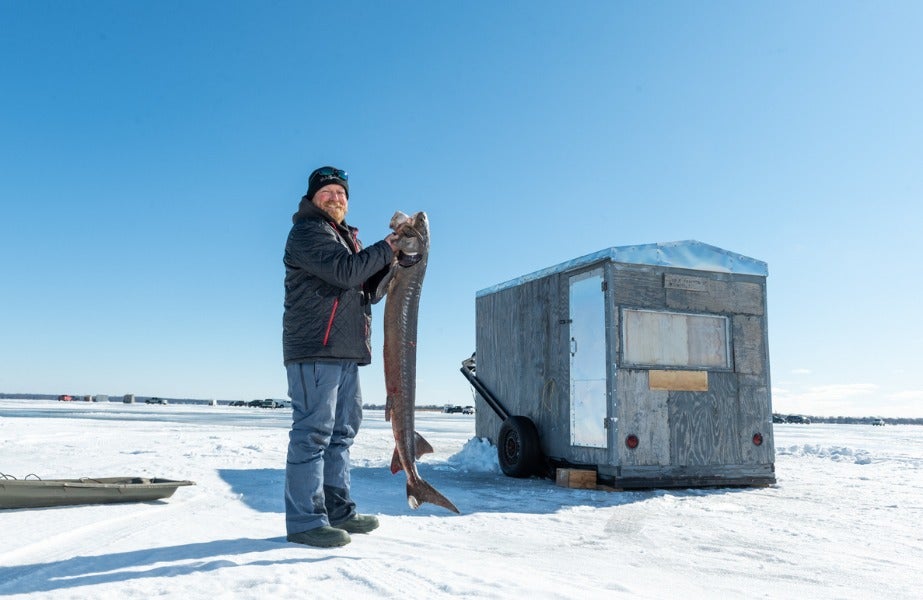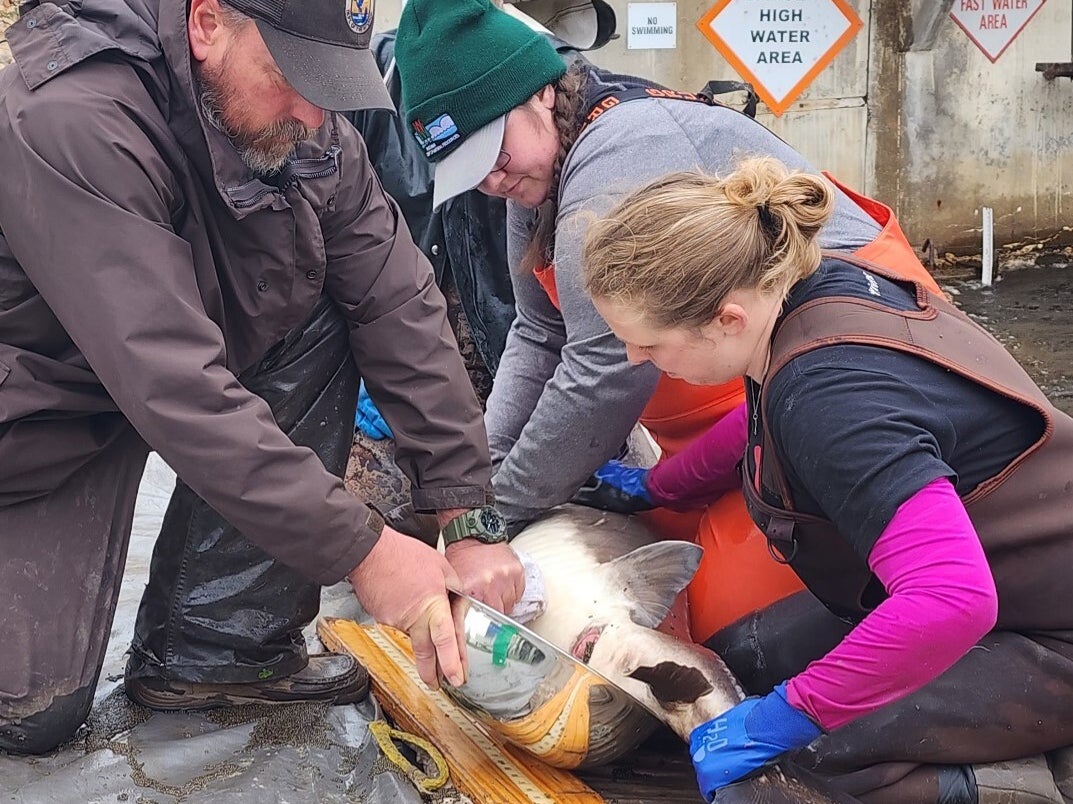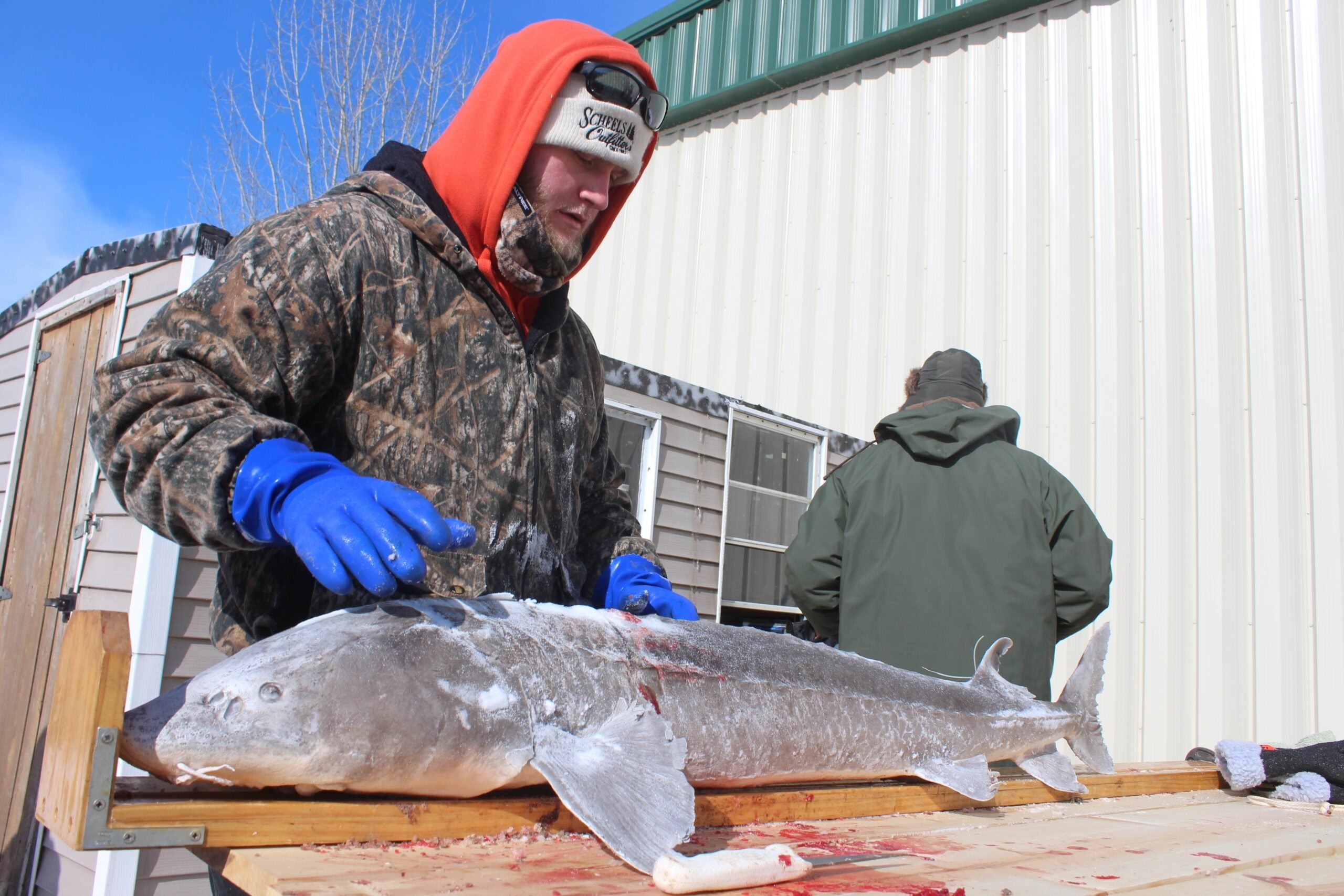More than 13,000 licenses have been sold ahead of Wisconsin’s sturgeon spearing season opener this weekend. Biologists with the state Department of Natural Resources say better water clarity than last year should make for a good harvest.
Starting Saturday, thousands of Wisconsinites will gather on Lake Winnebago, along with the labyrinth of other lakes and rivers connected to it, for a chance to spear the biggest fish found in the state.
Lake sturgeon can grow to more than 6 feet in length and weigh close to 100 pounds during their especially long lives. According to the DNR, the oldest sturgeon on record was 82 years old. It was pulled from Lake Winnebago in 1953.
Stay informed on the latest news
Sign up for WPR’s email newsletter.
In 2010, Ronald Grishaber speared an 84 inch long sturgeon that weighed in at 212.2 pounds on the opening day of the season.
This year, more than 13,000 sturgeon spearing licenses have been sold by the DNR. That’s up from around 12,000 sold in 2022. The season starts Feb. 11 and will end Feb. 26, unless harvest caps are met sooner.
The Lake Winnebago system is home to one of the largest populations of lake sturgeon in North America.
During a Tuesday briefing, DNR Lake Winnebago System Fishery Biologist Margaret Stadig said water clarity is one of the biggest predictors of success for spearers. She said warm weather kept DNR staff from safely measuring clarity on Lake Winnebago until this week, but staff found an average water clarity of 13 feet. Water on the eastern shores of the lake was clearer than it was on the western shores.
“With water clarity being pretty good this year, we expect to see a decent number of lake sturgeon harvested, though the warm weather may deteriorate some of the ice conditions and that might actually cause a reduction in spearing success,” Stadig said.
DNR harvest caps for sturgeon are slightly lower this season than in past years, with spearers allowed to take up to 350 juvenile females, 793 adult females and 1,231 males.
Stadig said biologists recorded low densities of lake fly larvae, which could impact distribution of the fish around Lake Winnebago. But, she said there was a slight increase in the numbers of small fish known as Gizzard Shad, another staple of the sturgeon diet.
“So, if you can find gizzards out on the lake,” Stadig said, “you’ve got a pretty good success with the fish.”
Lake sturgeon are described as “living fossils” by biologists. They first appeared around 100 million years ago and have remained relatively unchanged.
Those able to spear a sturgeon this year must register their fish by 2 p.m. on the day it was caught. There will be 10 in-person registration stations located on the shores of Lake Winnebago, Lake Butte Des Morts and Lake Poygan.
Wisconsin Public Radio, © Copyright 2025, Board of Regents of the University of Wisconsin System and Wisconsin Educational Communications Board.





